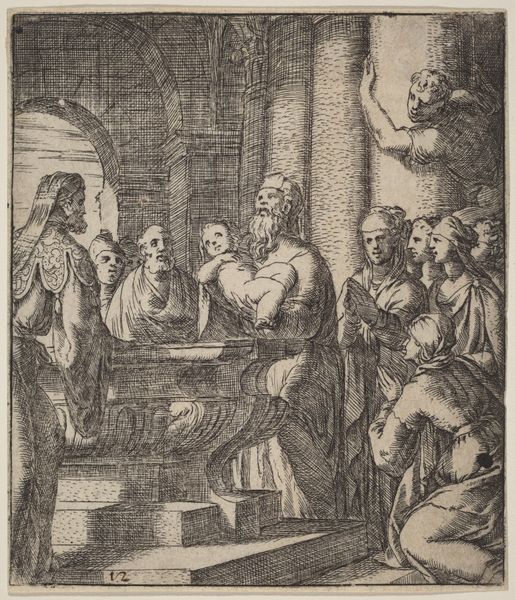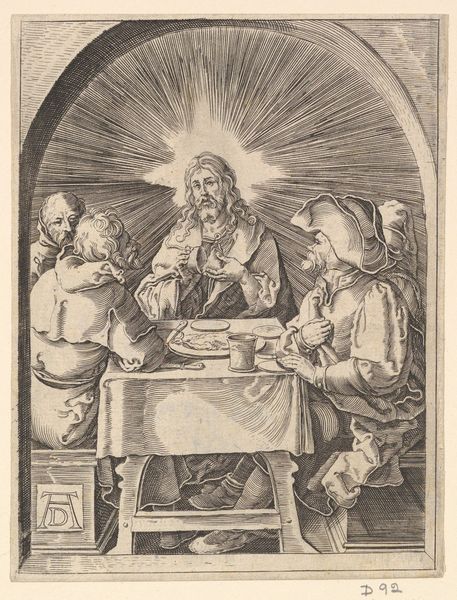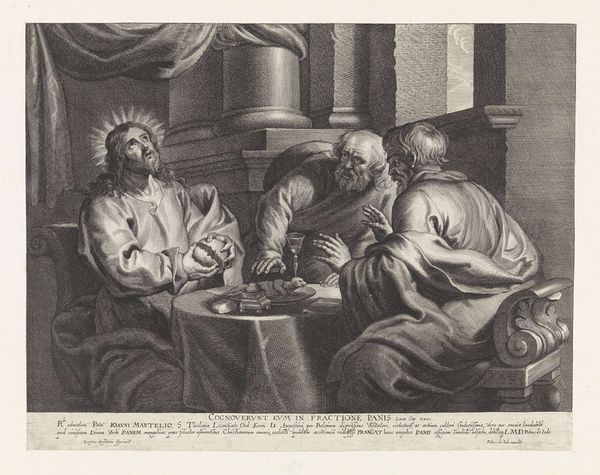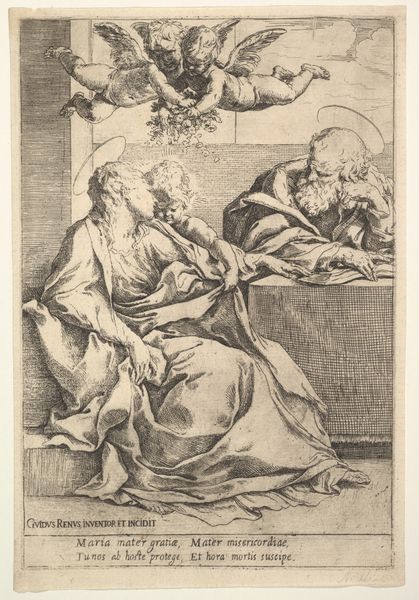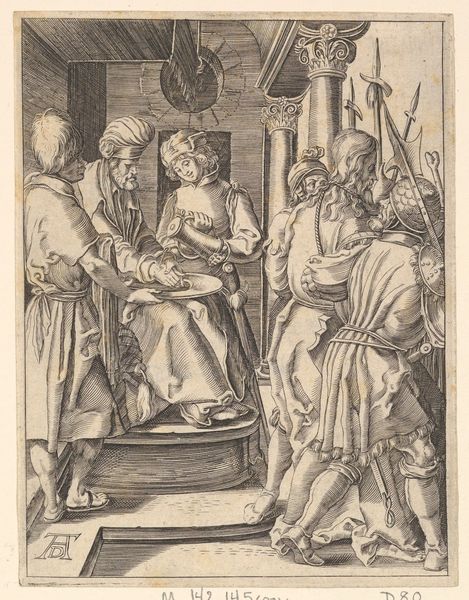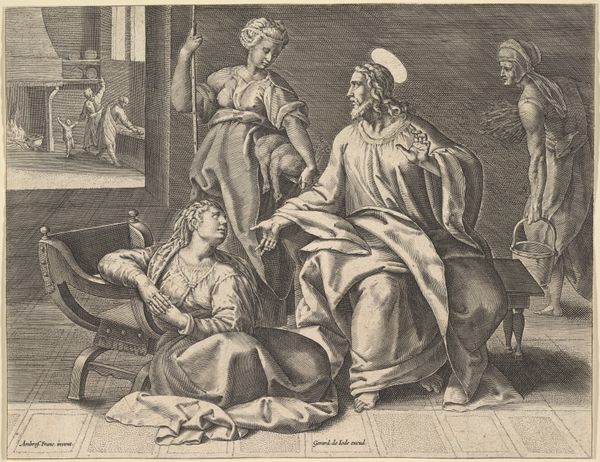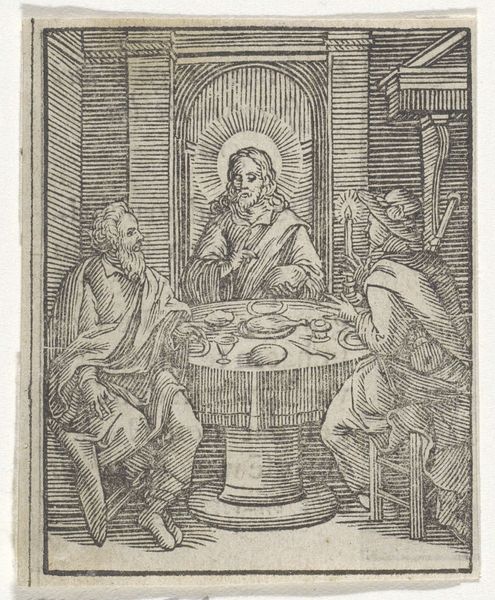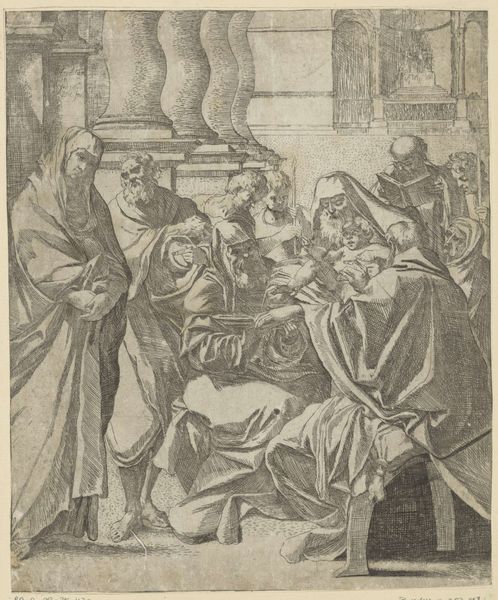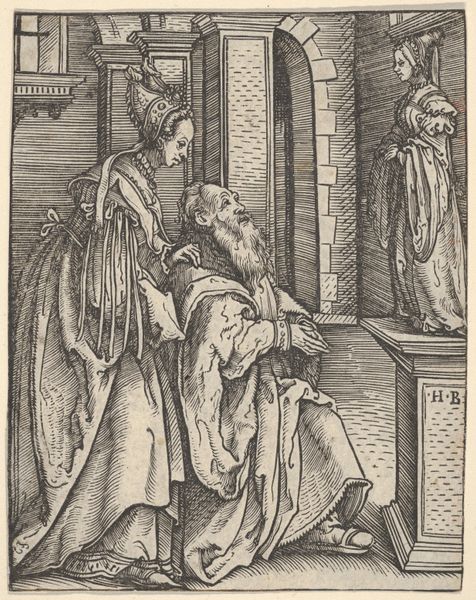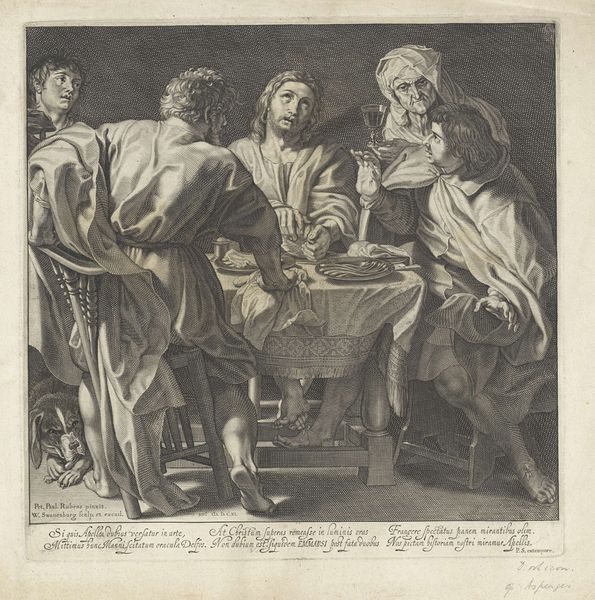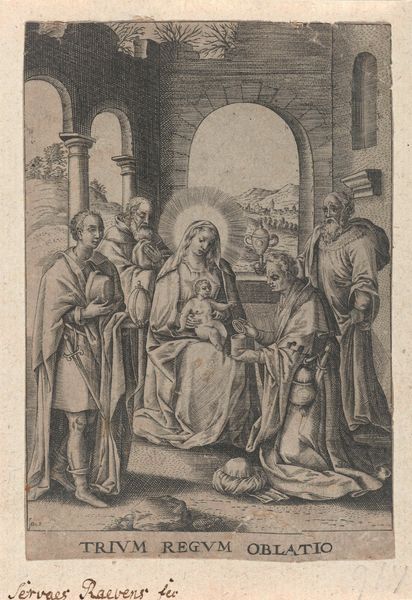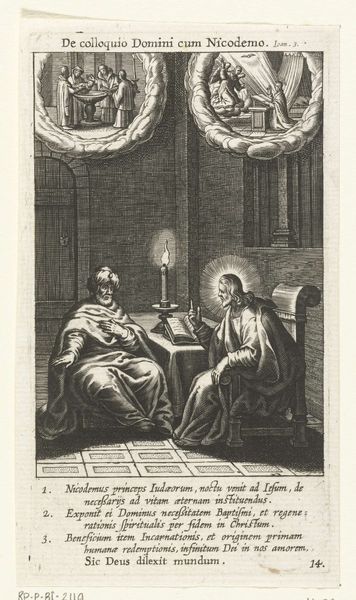
Dimensions: sheet: 7 13/16 x 6 in. (19.9 x 15.3 cm)
Copyright: Public Domain
Editor: Here we have "Christ in Emmaus," an engraving made sometime between 1550 and 1600 by Johann Sadeler I, currently at the Metropolitan Museum of Art. It strikes me as a very intimate portrayal, almost like eavesdropping on a quiet moment. What catches your eye in this print? Curator: I’m drawn to the labour inherent in its creation. Look at the density of lines Sadeler meticulously engraved. Each one demanded careful planning and physical effort. Consider too, the social context: prints like these weren't just aesthetic objects. They were commodities, reproduced and circulated, acting as vehicles for religious and political ideas. Who would have consumed such a piece, and how would their social status influence their perception? Editor: So, you see it as an object tied to both artistic skill and its role in society? Curator: Exactly! Think about the availability of the materials themselves - the copperplate, the inks, the paper. Each reflects the economic conditions and trade networks of the time. The Latin inscription and high level of technical skill suggest a relatively wealthy, educated audience, but even then, prints like this brought imagery to those who might never have seen a painting. What can the shells worn by the pilgrim tell us about popular pilgrimage routes or religious identity? Editor: That really reframes how I see it. I was focused on the facial expressions and the story, but now I’m considering the whole material process. Curator: Good. It shifts the focus from simply admiring the "genius" of the artist to appreciating the work as a product of its time, embedded within a network of material and social relations. This impacts its value. Editor: This has definitely broadened my understanding. Considering the materials and production gives the artwork a completely new depth. Thanks for the insights. Curator: And for me, your initial response was a necessary reminder of the narrative power within the art object, prompting material reality to reflect its spiritual intention.
Comments
No comments
Be the first to comment and join the conversation on the ultimate creative platform.

